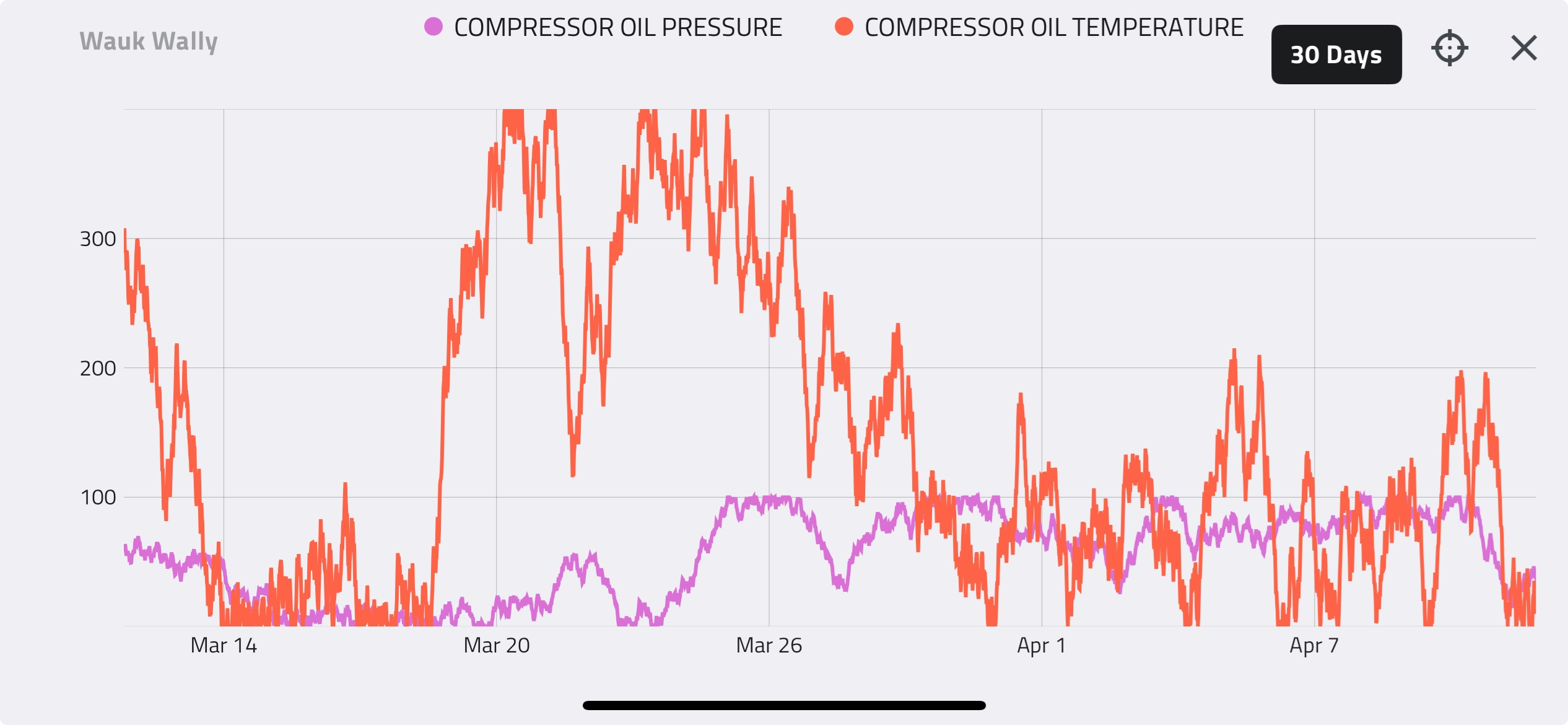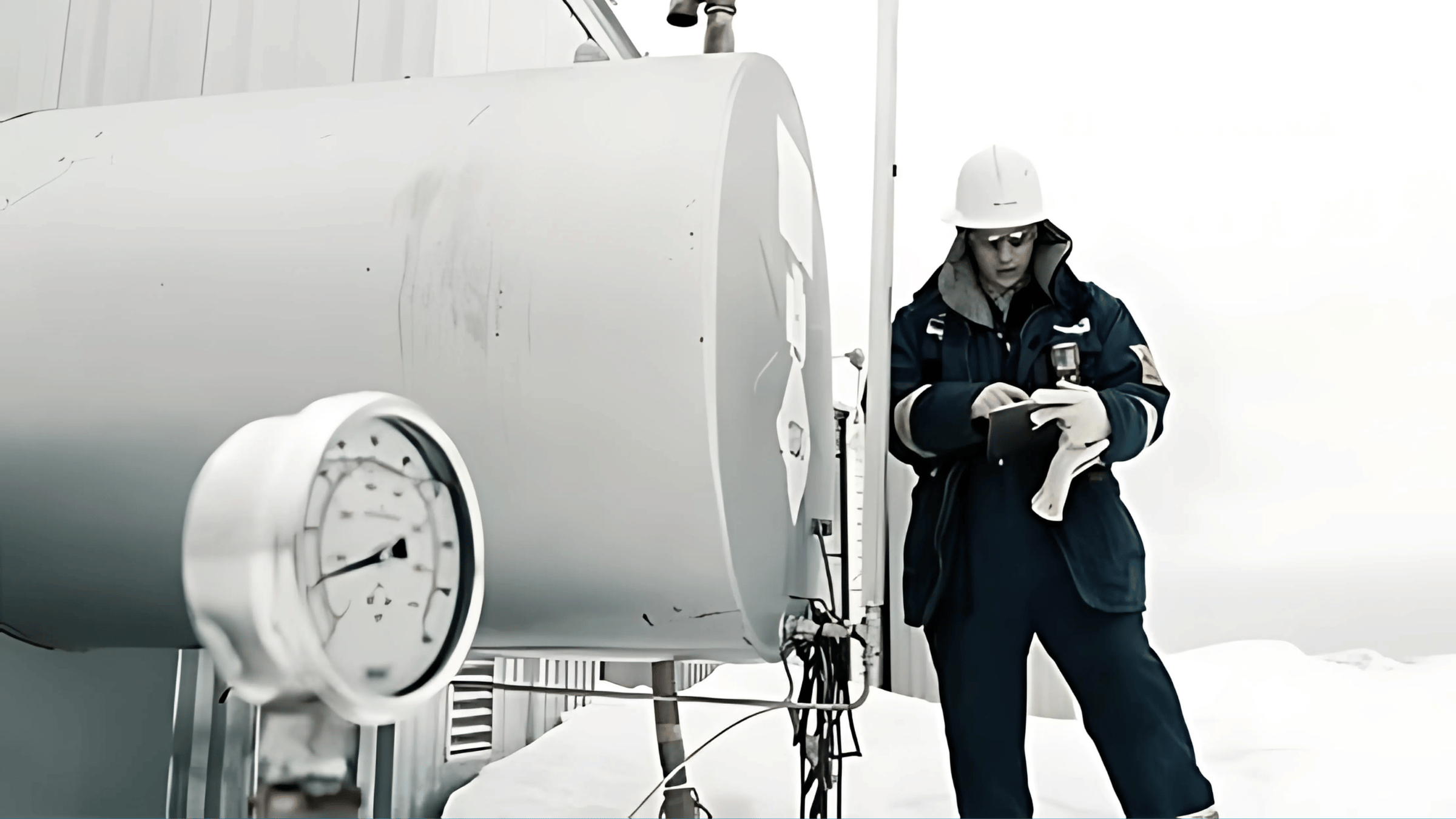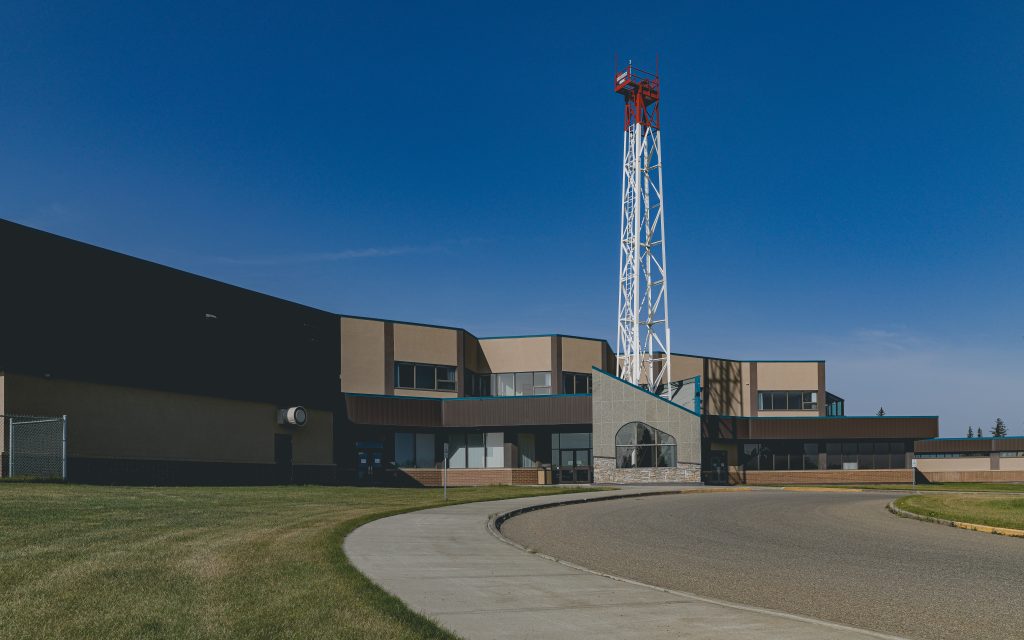Houston, TX | January 1, 2024
Natural gas compression is the process of increasing the pressure of natural gas so it can be transported and used effectively. In simple terms, compressors “squeeze” the gas, raising its pressure and giving it the energy needed to flow through pipelines and processing equipment. Without compression, natural gas from a well wouldn’t travel very far – certainly not all the way from a remote wellhead to your home’s furnace or a power plant’s turbine. This process is a critical component at multiple stages of the natural gas value chain, from the production site to the end user.
If you’re in upstream or midstream operations, understanding how gas compression works—and how to optimize it—can save millions in downtime, maintenance, and fuel costs.
Why Natural Gas Compression is Essential
Natural gas moves from where it’s produced to where it’s consumed through a series of pipelines and facilities. As gas flows through pipes, it loses pressure due to friction and distance. If nothing is done, the gas would slow down and eventually stop. Compressors solve this by periodically boosting the gas pressure to keep it moving. In fact, in long-distance pipelines, compressor stations are typically spaced every 40 to 100 miles to re-pressurize gas and overcome friction losses. By increasing the gas pressure, a compressor station provides the energy to push the gas further down the line. Compression also helps in other situations: for example, boosting low-pressure gas from a well so it can enter a pipeline, or increasing pressure after processing so the gas meets pipeline specifications. In short, without compression, it would be nearly impossible to efficiently transport natural gas over long distances or through various processing steps.
To understand where natural gas compression fits in, let’s look at each stage of the natural gas supply chain and see how compressors are used:

While this overview won't go into depth about the types of compressors, it is worth noting that reciprocating compressors will be the most common type of compressor found in the value chain as they are often the most versatile, screw compressors will often be found in lower volume applications, and centrifugal/turbine compressors will often be found in high volume applications.
Wellhead and Production Site Compression
At the wellhead, natural gas comes out of the ground under its own pressure (the reservoir pressure). Initially, this pressure may be high, but it declines over time as the well is produced. If the natural pressure becomes too low, the gas will no longer flow into the gathering pipeline or processing facility. That’s where wellhead compressors come in. Wellhead compression involves placing a compressor at or near the production site to boost the pressure of the produced gas. By suctioning gas from the well at a lower pressure and compressing it to a higher pressure, these compressors help “pull” more gas out of the reservoir and keep the gas flowing even as the well ages. In practical terms, a wellhead compressor can extend the productive life of a gas well by allowing it to produce at lower reservoir pressures. It also ensures the gas is delivered at sufficient pressure to enter the next stage of handling. This stage is often the first point where compression is applied – essentially giving the gas a push right from the start of its journey.
Gathering Systems: Field Compression
After leaving the wellhead, natural gas typically enters a gathering system – a network of small pipelines that collect gas from many wells and deliver it to a central facility (usually a processing plant or a larger pipeline). In gathering systems, the gas from multiple wells might need an extra boost to travel through miles of piping, especially if the terrain is hilly or the wells are far from the processing site. Field compressors (often skid-mounted units in the field) are used to increase the pressure of gas in gathering lines, ensuring the gas from scattered wells all flows toward the processing facility.

In the gathering stage, compressors help overcome the pressure drops that occur when combining flows from multiple wells and moving the gas through relatively small-diameter pipelines. They maintain a continuous flow and prevent bottlenecks. For example, if one well is farther away or has lower pressure, a field compressor can help equalize and elevate the pressure so that all the gas streams can merge and move along together. This is crucial for efficient operations – without gathering compressors, some wells might not be able to deliver their gas to the plant, especially later in their life. Field compression thus plays a key role in getting raw gas from the point of production to the point of processing.
Processing Facilities
Once the gas reaches a processing facility, it goes through steps to remove impurities and liquids (such as water, carbon dioxide, hydrogen sulfide, and natural gas liquids like propane and butane). Within these processing plants, compression can come into play in a couple of ways:
- Inlet compression: If the incoming gas from the field is at a lower pressure than what the processing equipment requires, compressors at the plant inlet will raise the pressure. This ensures the plant can operate efficiently. Not all plants need inlet compressors (if the gathering system already provided enough pressure, they may not be required), but in some cases they are essential to get the raw gas into the processing units.
- Residual gas compression (outlet compression): After processing, the cleaned “pipeline-quality” gas (often called sales gas or residue gas) needs to enter high-pressure transmission pipelines. Processing can cause a drop in pressure (for example, when liquids are removed, the gas may be at a lower pressure), so compressors are used to re-pressurize the dry gas to transmission pipeline pressure. Essentially, the plant will have one or more large compressors that take the processed gas and boost it, so it meets the pressure requirements (which can be quite high, often hundreds of psi) of the long-distance pipeline that carries it away. Without this step, the gas might leave the plant at too low a pressure to efficiently enter the transmission system.
In summary, compression at processing facilities makes sure the gas doesn’t get stuck at the plant. It bridges the gap between the field gathering pressure and the much higher pressures of cross-country pipelines. You can think of it as preparing the gas for the “long haul” ahead.

Transmission: Compressor Stations Along the Pipeline
The transmission stage is where natural gas travels long distances through large high-pressure pipelines, crossing states or even countries to reach demand centers. Here, natural gas compression is absolutely vital. As mentioned earlier, when gas flows through a pipeline, it loses pressure due to friction with the pipe walls and other factors. If you’ve ever stretched out a garden hose and noticed the water pressure drop off, you have a sense for what happens in a gas pipeline (though gas is compressible and the physics differ, the concept of pressure loss over distance is similar). To counteract this, compressor stations are placed at intervals along the pipeline to periodically boost the gas pressure back up. Each station typically receives gas at a lower pressure (after it has dropped over many miles of travel) and then compresses it to a higher pressure before sending it on its way. In doing so, the station re-energizes the gas so it can continue flowing towards its destination.
These compressor stations often house powerful engines or turbines that drive the compressors. For example, a gas turbine (similar to a jet engine) might drive a centrifugal compressor to squeeze the gas, or a giant piston engine might drive a reciprocating compressor. They are strategically located based on the pipeline’s engineering – typically every few dozen miles, but placement can vary depending on terrain and pipeline diameter. In hilly areas or places with many offtakes and additions of gas, you might see stations more frequently. The result is that the pipeline pressure is maintained within an optimal range all along the route.
It’s worth noting that transmission compressor stations are major infrastructure facilities – often remotely monitored and controlled (more on that later) to ensure safety and reliability. They are the engines of the pipeline system, enabling continuous flow. Without them, long-distance gas transmission would not be practical, as gas would slow down and fail to reach faraway markets.
Distribution and End Use: Final Compression Needs
When the high-pressure transmission pipeline nears its destination (such as a city or industrial region), the gas pressure is stepped down at a city gate station for entry into local distribution networks. Distribution pipelines (the ones that run under city streets and to businesses and homes) operate at much lower pressures than transmission lines for safety and practical appliance use. Typically, distribution pressure might be anywhere from 0.25 psi in residential service lines to a few hundred psi in regional feeder lines. Here, the focus is usually on de-compression (pressure reduction through regulator stations) rather than adding pressure. So in the distribution stage, large compressors are generally not used the way they are in transmission. Instead, pressure regulators ensure the gas is delivered at the correct lower pressure to customers.
However, there are still some instances where compression plays a role in end-use and distribution settings:
- Storage injection: Utilities often store natural gas in underground storage (like depleted reservoirs or salt caverns) for use during high-demand periods.
- Booster compressors: In some local distribution systems, if there’s a particularly long run or an area at the far end of the network that isn’t getting enough pressure, a small booster compressor might be installed to elevate the pressure slightly. These are not very common, but they exist for niche scenarios to maintain service pressure.
- End-use compression (CNG): For certain end uses, natural gas needs to be compressed just before use. A prime example is Compressed Natural Gas (CNG) fueling stations for vehicles. These stations take pipeline natural gas at moderate pressure and run it through a high-pressure compressor to fill storage cylinders or vehicle tanks at 3,000–4,000 psi.
In summary, by the time natural gas reaches most end users (homes, businesses), the pressure has been reduced and carefully regulated for safe use. Large-scale compression at this stage is not as prevalent as in earlier stages, but compression has already done its job to get the gas to this point. For specialized applications like vehicle fuel or storage, compressors step in again to provide the required pressures.
Monitoring, Control, and Optimization of Compression Systems
Across all these stages – from the wellhead to the pipeline network – natural gas compressors are often operating in remote locations under varying conditions. Monitoring, control, and optimization technologies are essential to ensure these compressors run safely, efficiently, and with minimal downtime. But what do these terms mean in practice?
- Monitoring refers to continuously tracking the performance and condition of compressor units. This is typically done with sensors and Industrial IoT (Internet of Things) devices that send data on pressures, temperatures, flow rates, engine status, etc., to a central system. With modern monitoring, operators can achieve “360° compression fleet transparency,” gaining comprehensive visibility into how each compressor is operating in real time. They can see if a compressor is running within its desired range, if any parameter is out of tolerance, or if a shutdown has occurred. For example, if a compressor at a gathering station shuts down unexpectedly, a remote monitoring system will immediately send an alert. This real-time awareness is crucial for reducing downtime – the sooner you know there’s a problem, the sooner you can dispatch a team to fix it.
- Control in this context means the ability to remotely or automatically adjust compressor operations. Many compressor stations have onboard control systems (PLC controllers or automation systems) that regulate things like engine speed, throttle valves, or the engagement of additional compressor stages. Remote control allows pipeline dispatchers or field engineers to start or stop units and change setpoints without having to be on-site. This is especially important for optimization – for instance, remotely throttling a compressor to match lower night-time demand, or starting an extra compressor when gas flow increases. Autonomous control systems are also emerging, where compressors can adjust themselves based on algorithms that keep operations within optimal ranges.
- Optimization involves using data and control capabilities to run the compression system in the most efficient and reliable way possible. This can mean maximizing throughput (moving the most gas with the least energy), minimizing fuel consumption for engine-driven compressors, scheduling maintenance at optimal times, and preventing failures. For example, analysis of sensor data might reveal that a compressor is trending toward an unhealthy condition – allowing maintenance to be performed proactively before a breakdown occurs (a practice known as predictive maintenance). Optimization software can also recommend the ideal configuration of multiple compressors (which ones to run, at what settings) to meet the day’s operational targets at lowest cost.
From a business perspective, effective monitoring and control translate to higher uptime and lower operating costs. Companies like Detechtion Technologies focus on these aspects – providing tools to monitor entire compressor fleets and manage them by exception (meaning attention is drawn only when something is off, saving time). With remote monitoring in place, operators no longer have to “drive blind” or rely solely on periodic field visits. They get instant notifications if a compressor shuts down or deviates from normal operating conditions. This clarity allows them to dispatch the right personnel with the right tools to fix issues, rather than guessing what might be wrong. The result is fewer unnecessary site trips, faster repairs, and significantly reduced downtime.
In practice, imagine a pipeline compressor station in a remote area: an optimized monitoring and control system will automatically adjust the compressors as pipeline flow demands change, and if a unit trips, an alert is sent out and a backup unit might auto-start to keep gas moving. All the while, engineers at a central control center can see exactly what’s happening. This level of insight and automation leads to safer operations (compressors are run within their limits), improved efficiency (no more running units harder than needed or wasting fuel), and longer equipment life (since maintenance can be performed based on actual condition rather than just a calendar schedule).
To summarize, natural gas compression is not just about the hardware of compressors, but also about the smart management of that hardware. Monitoring, control, and optimization technologies are the unsung heroes that ensure compressors at the wellhead, in the field, and along pipelines are doing their job 24/7. They maximize throughput, minimize downtime, and help deliver natural gas reliably to all of us who depend on it.
By understanding what natural gas compression is and why it’s needed at each stage, we gain appreciation for the complex journey natural gas takes from deep underground to our appliances and industries. Compressors are the indispensable workhorses of this journey – from the small units breathing life into aging wells, to the giant stations tirelessly pushing gas across continents. And with modern monitoring and control systems in place, these compressors operate more efficiently and reliably than ever, ensuring that the natural gas value chain is optimized from end to end.



